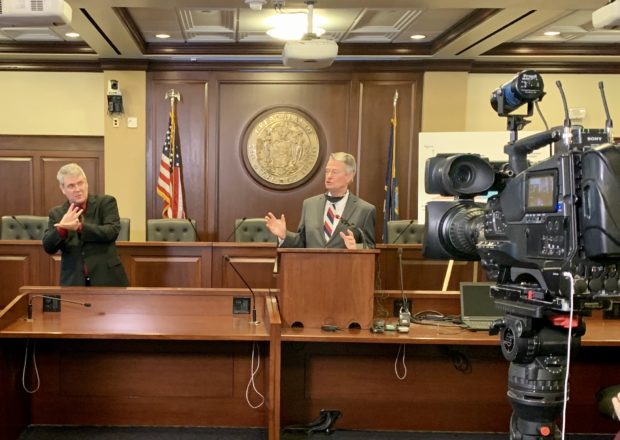Although the decision has not been made, many Idaho schools are likely to begin the school year in the second of three categories designed to gauge the degree of spread of the coronavirus, public health officials said.
Where a school is classified could play a big role in how education is delivered in the fall, but local trustees and administrators still have the power to come up with their own reopening plans

On July 9, Gov. Brad Little and the State Board of Education released nonbinding guidance intended to help local leaders develop their own fall reopening plans. The Idaho Back-to-School Framework 2020 creates three categories that a school could be classified as, along with recommended guidance and advice.
- For schools in category one, where there is no community transmission of the virus, the guidance calls for a traditional, in-person school experience.
- For schools classified in category two, with minimal to moderate community transmission, the state’s recommended guidance includes blended learning, which could entail staggered schedules, limited use of school buildings and remote learning. Schools in category two may also chose a traditional opening or extended closures with remote learning.
- For schools in category three, the red category with substantial community transmission, the state guidance calls for full remote learning and extended school closures longer than six weeks.
“If you’ve had community transmission declared (in your county or area) you are advised to start in category two,” said Gina Pannell, a program manager at Central District Health who served on Little and the State Board of Education’s Public School Reopening Committee. “It is unlikely any school will move backwards into category one this year because of the way the virus spreads.”
The goal is to mitigate risks, not eliminate them, to stay in category two as long as possible, Pannell added.
James Corbett, Eastern Idaho Public Health community health administrator, agreed that classification in category two, which some schools refer to as “yellow,” is likely for many schools.
It is likely most counties or school districts will have community spread of coronavirus when school starts this fall or late this summer, Corbett said.
Local public health officials are working alongside the Idaho Department of Health and Welfare and the state epidemiologist to help schools see which of the three categories a school will fall under. They may come up with measurements or definitions intended to help provide a uniform understanding of what a given category is and means.
From there, it’s a school districts decision how to move forward.
One of the factors health officials consider when talking with school officials about reopening are “community indicators that put our hospitals at risk,” Pannell said.
Health officials said they will strive to work together so that the categories will be uniform, whether you go to school in Boise, Bonner’s Ferry or Blaine County.
“In the categories, we’re aiming to have uniformity across the state,” Eastern Idaho Public Health Director Geri Rackow said.
Consistency is important because “it’s not always the case that public health district boundaries align with school district boundaries,” Corbett added.
Beyond the matter of assigning a classification for schools, Pannell knows a lot of Idahoans just want to know if it’s safe to go back. As a mother and a health expert, Pannell knows it’s complicated. It’s a risk, just like going to the grocery store or sending kids to daycare, she said.
Pannell resides in the Boise district’s boundary, has read the local reopening plan closely, and, as of Wednesday’s interview, would send her own children back to school.
When it comes to reopening safely, Pannell said it is important for schools to address the risks and for parents to do their part keeping their children home if they are sick or have been exposed to the virus.
“A safe and effective school year will only happen if they work together,” Pannell said.
Although Little and the State Board encouraged schools to safely reopen at the end of summer, the State Board is urging schools to prepare to deliver blended learning. On Wednesday, the State Board voted unanimously to approve a series of recommendations to support blended, remote or online learning.
A closer look: How do health districts work?
(Source: Central District Health public information officer Christine Myron)
Idaho has seven public health districts. They are autonomous. They are not part of the Idaho Department of Health and Welfare, although they work closely together and perform some contract work for the department.
Public health districts are overseen by boards, which are appointed by local county commissioners. By law, public health boards are required to have one physician.
The public health board appoints a director, who serves as secretary of the board but is not a member of the board.
Even though local school districts are in charge of reopening, public health districts are still allowed, by law, to close schools. Public health boards may issue orders of quarantine, isolation and restriction based on a vote of all members present at a board meeting. A simple majority vote is required to authorize an order or restriction.
